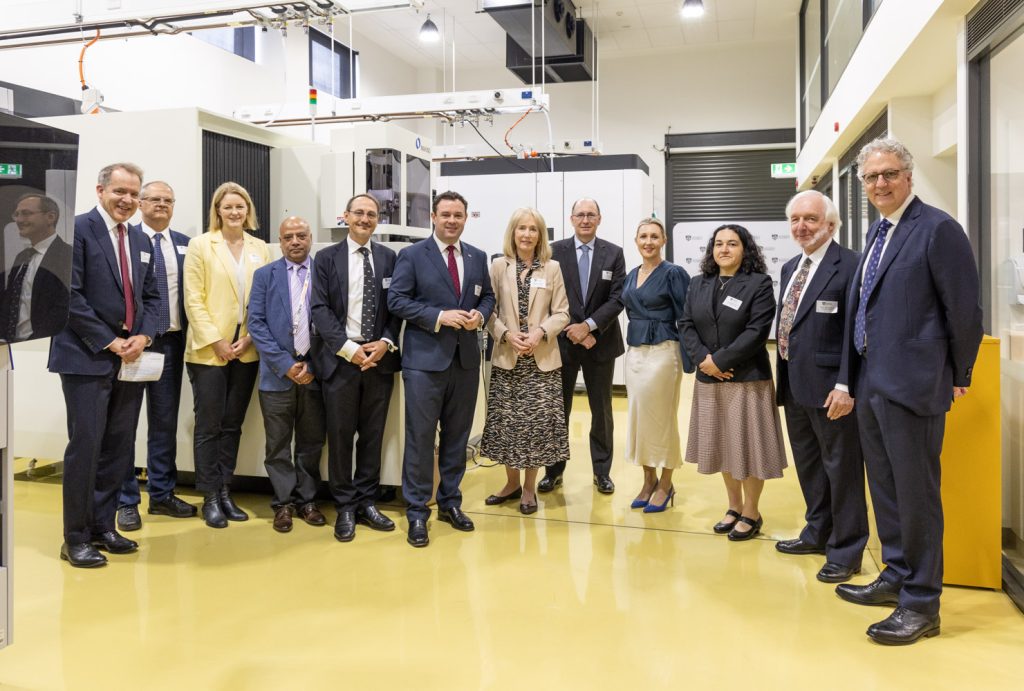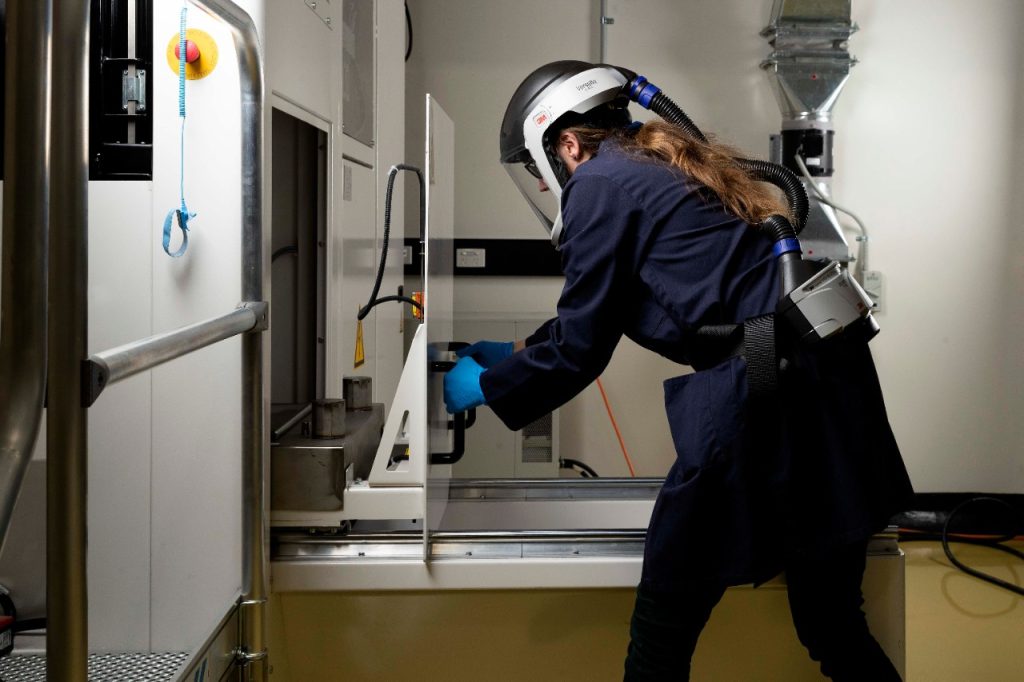The University of Sydney has announced the opening of a ‘factory of the future’ through which it aims to drive 3D printing innovation and put the region “at the heart of Industry 5.0.”
Based on the university’s Darlington campus, the $25 million site is fitted with all the design, 3D printing, post-processing and characterization gear needed, to fulfill its potential as a production-focused research facility. To help translate discoveries made at the complex into end-use applications, the university has also partnered with GE Additive, with which it has agreed to collaborate on ‘experimental R&D.’
“This facility will support the collaboration of industry and researchers, and is set to become a commercialization hub for new products and innovations across a range of advanced manufacturing industries,” explains GE’s Sam Maresh. “We see the value of the new facility as an industrial incubator, underpinning rapid advances in manufacturing and developing world-leading skills for Australian SMEs.”

Sydney’s ‘factory of the future’
Built as a ‘foundational node for complementary facilities,’ the complex is set to not only house projects run by New South Wales’ government, but those featuring industry partners, involving the R&D of 3D printing and material processing.
Thanks to its design optimization and post-printing technologies, as well as its alloy, ceramic and polymer-compatible systems, the facility could be well-placed to facilitate 3D printing’s introduction into new applications. It’s therefore fitting that these ‘concept-to-production capabilities’ are set to be used by students plus SMEs and larger firms, many of which are entering metal 3D printing for the first time.
On the other end of the scale, through more advanced research, the facility’s Director Simon Ringer says that it could even be possible to harness 3D printing’s wide material processing, sustainability and in-sourcing benefits, as a means of “dramatically disrupting” manufacturing in the aerospace, automotive, biomedical, defense and construction sectors.
“Advanced manufacturing is making the previously impossible possible,” said Ringer. “Key industries will benefit from these technologies through the reduction of material waste, simplified supply chains, and an independent capacity to create materials, components and even whole machines – all of which weren’t possible using traditional manufacturing.”
“Using these technologies, we could soon see Australian-designed and built space rocket engines, hypersonic vehicles, satellites, eco-active building and construction.”

A five-year industrial research deal
As well as playing host to academic research projects, the facility is also set to offer specialized consulting and training to industrial partners, which will have guided and independent access to the facilities for testing, research and fabrication.
Already, the institution has revealed GE Additive to be one such partner, with the two organizations agreeing a five-year deal to advance Australia’s manufacturing capabilities during 2020. The agreement, which follows the ten-year Memorandum of Understanding (MoU) signed by the pair in 2018, is expected to see them collaborate on material R&D, in addition to “experimental work” at the facility.
Said to be fitted with ‘state-of-the-art’ GE Additive technologies’ the complex will also serve as a hub in which the firm can demonstrate its 3D printing systems to Australian and New Zealand-based clientele, in a way that Maresh says could allow it to not only unlock “rapid advances in manufacturing,” but develop “world-leading skills for Australian SMEs.”
“The Sydney Manufacturing Hub is now open for business and ready to engage with industry across NSW, particularly SMEs where there is significant opportunity for new high-skilled jobs,” added Maresh. “NSW is positioning itself at the centre of AM capability and research within the Asia-Pacific region, and the Sydney Manufacturing Hub is a significant step towards achieving that ambition.”

GE’s advancing Additive portfolio
Operating as a subsidiary of U.S conglomerate GE, GE Additive markets DMLM, EBM and binder jet 3D printers, as well as software and AP&C materials, to clients in the automotive, aerospace, defense and medical sectors. The firm has invested heavily in its AM capabilities over the last five years, first buying Arcam and Concept Laser in 2016, then building an EBM Center of Excellence to house its machines.
In doing so, GE has effectively turned itself from a user of the technology into a supplier, and it continues to market systems under these acquired brands to this day. GE’s Concept Laser M Series, for instance, was adopted by the EROFIO Group for 3D printing mold cores in June 2021, three months after Tsunami Medical installed two Mlab machines to ramp up its spinal part production.
GE Additive is also preparing to launch a successor to its H1 Binder Jet 3D printer. Known as the ‘H2,’ the company’s upcoming system has already been installed by Cummins Inc among an array of other beta sites, and it announced a partnership with Sandvik in October last year, through which Osprey metal powders were qualified for use with the H2.
More broadly, GE Additive has continued to seek out partnerships that stretch the capabilities of its technologies, agreeing to work with BEAMIT in October 2021 to optimize the post-processing of GE9X and Catalyst jet engine parts, and its extended collaboration with the University of Sydney now presents it with another chance to do so.
“By partnering with GE Additive, an industry leader in additive manufacturing, we can set the agenda for this disruptive technology,” the university’s Principal, Dr Michael Spence said following the organizations’ MoU back in 2018. “[Our] collaboration will drive the R&D needed to learn how this disruption to manufacturing can be harnessed for economic benefit.”
To stay up to date with the latest 3D printing news, don’t forget to subscribe to the 3D Printing Industry newsletter or follow us on Twitter or liking our page on Facebook.
For a deeper dive into additive manufacturing, you can now subscribe to our Youtube channel, featuring discussion, debriefs, and shots of 3D printing in-action.
Are you looking for a job in the additive manufacturing industry? Visit 3D Printing Jobs for a selection of roles in the industry.
Featured image shows the launch of Sydney’s Manufacturing Hub with Australia’s Minister for Trade and Industry the Hon. Stuart Ayres (sixth from left). Image via Bill Green/University of Sydney.



